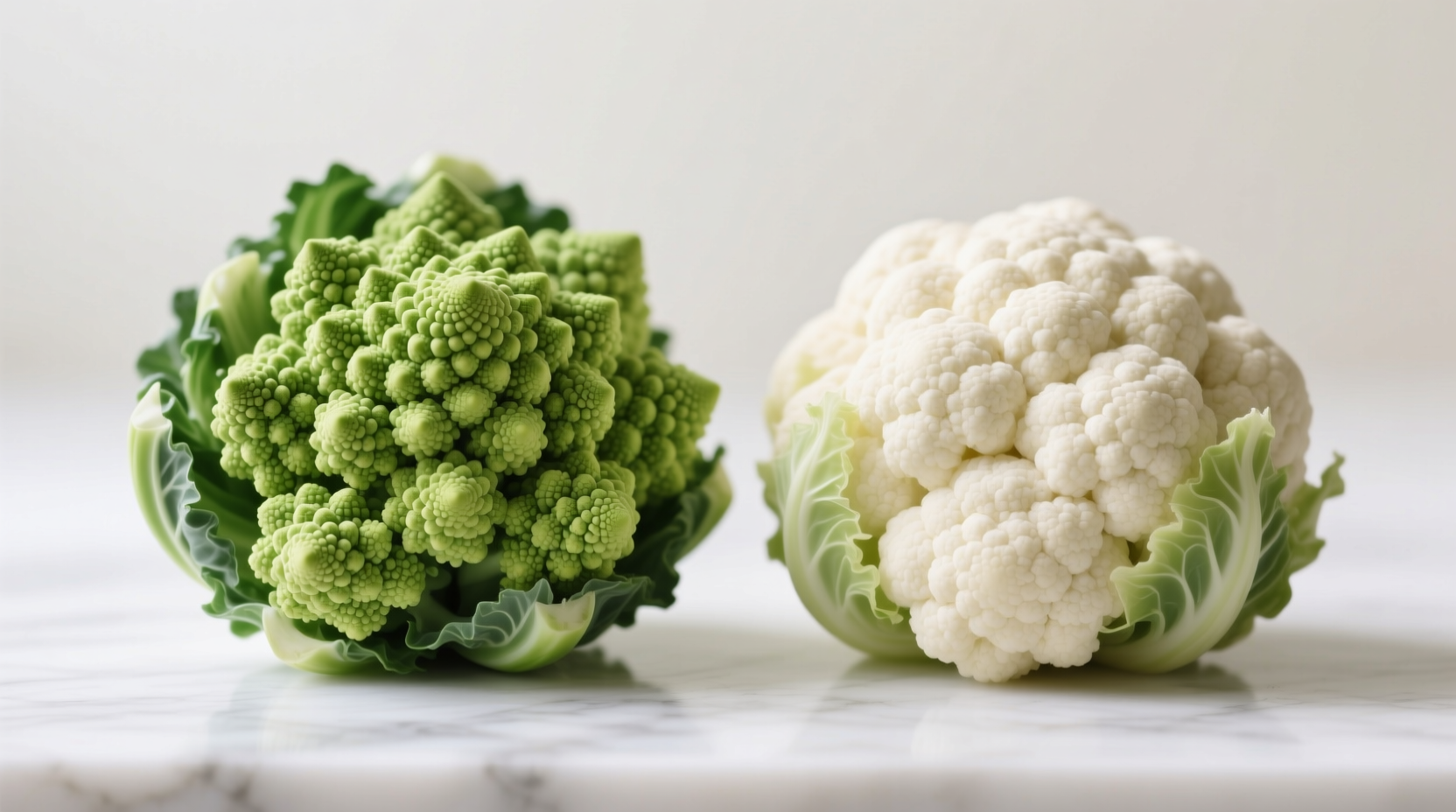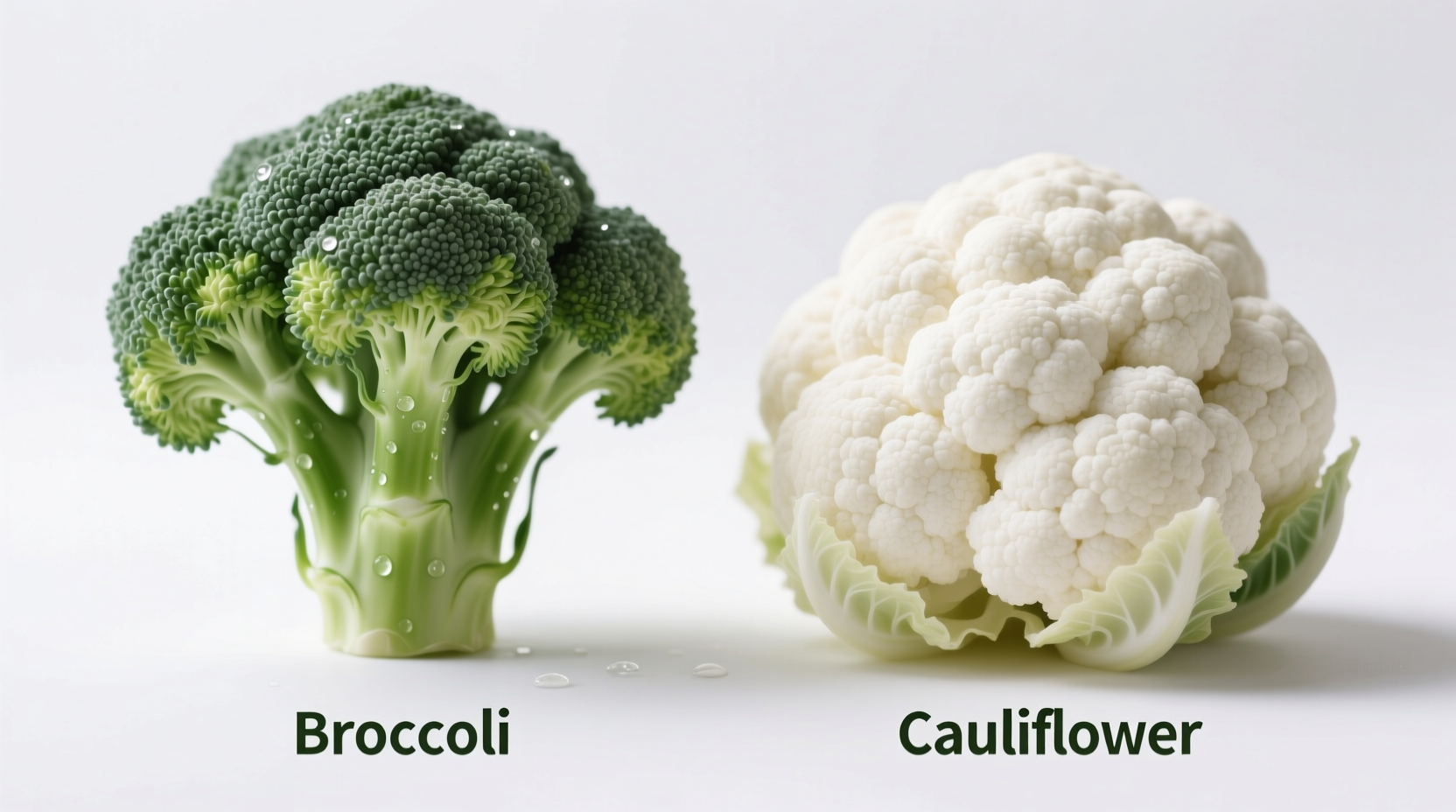What You'll Actually Learn From This Comparison
Stop guessing which vegetable works best for your recipes. This guide delivers actionable insights from culinary science and nutrition research to help you choose between white broccoli (Romanesco) and cauliflower with confidence. You'll discover exactly when to substitute one for the other, which provides superior nutrition, and how their unique structures affect cooking results.
Spotting the Difference: Visual Identification Guide
At first glance, white broccoli (technically Romanesco) and cauliflower appear similar, but their structural differences are unmistakable once you know what to look for. Romanesco features striking fractal patterns with lime-green to pale yellow hues and pyramid-shaped florets. Cauliflower forms a dense, creamy-white curd with traditional branching florets.
When selecting at the market, Romanesco should feel firm with crisp, vibrant coloring. Fresh cauliflower shows minimal browning on the leaves and feels heavy for its size. Both should have tight, compact heads without dark spots or moisture.

Nutritional Breakdown: Health Benefits Compared
While both vegetables belong to the Brassica family and offer significant health benefits, their nutritional profiles differ in meaningful ways. Romanesco generally contains higher levels of vitamin C and carotenoids, while cauliflower provides more carbohydrates and certain B vitamins.
| Nutrient (per 100g) | Romanesco (White Broccoli) | Cauliflower |
|---|---|---|
| Calories | 31 kcal | 25 kcal |
| Protein | 3.7g | 2.0g |
| Fiber | 3.3g | 2.0g |
| Vitamin C | 103mg (172% DV) | 48.2mg (80% DV) |
| Vitamin K | 31.5mcg (39% DV) | 15.5mcg (19% DV) |
| Folate | 54mcg (14% DV) | 57mcg (14% DV) |
Data sourced from the USDA FoodData Central database confirms Romanesco's slightly higher protein and fiber content. Both vegetables contain sulforaphane, a compound studied for its potential cancer-fighting properties, though research from the National Institutes of Health suggests Romanesco may contain higher concentrations due to its unique structure.
Taste and Texture: Culinary Performance Analysis
Romanesco delivers a distinctive nutty, earthy flavor with subtle cheese-like notes, while cauliflower offers a milder, slightly sweet profile. The texture difference significantly impacts cooking results:
- Romanesco: Holds shape better during cooking with a firmer, almost crunchy texture. Its fractal structure creates more surface area for roasting and absorbs flavors well.
- Cauliflower: Becomes tender more quickly and breaks down easier, making it ideal for purees, rice substitutes, and dishes requiring a neutral base.
Chef studies at the Culinary Institute of America note that Romanesco's complex structure requires slightly longer cooking times to achieve tenderness throughout, while cauliflower can overcook and become mushy if not monitored carefully.
When Substitution Works (and When It Doesn't)
Understanding the context boundaries for substitution prevents recipe failures. These guidelines help you make smart swaps:
Successful Substitutions
- Romanesco for cauliflower in roasted vegetable dishes, grain bowls, or as a crudité platter component
- Cauliflower for Romanesco in soups, purees, or when creating rice/cauliflower mash alternatives
Problematic Substitutions
- Avoid substituting Romanesco in recipes requiring quick cooking like stir-fries (takes longer to become tender)
- Avoid substituting cauliflower in dishes where visual presentation matters (lacks Romanesco's distinctive fractal pattern)
Storage and Preparation Tips
Both vegetables require similar storage approaches but differ in preparation needs:
- Store unwashed in the crisper drawer for up to 1 week
- Soak in salt water for 10 minutes before cooking to remove hidden insects
- Romanesco benefits from trimming the tough outer leaves and cutting florets from the base upward
- Cauliflower often requires removing the core and separating florets more aggressively
For optimal nutrient retention, research from the Journal of Food Composition and Analysis recommends steaming both vegetables for 5-7 minutes rather than boiling.
Seasonal Availability and Cost Considerations
Romanesco typically appears in late summer through fall and commands a higher price (often 2-3 times cauliflower's cost) due to more challenging cultivation requirements. Cauliflower remains widely available year-round with seasonal price fluctuations.
When Romanesco isn't available, consider these alternatives:
- Regular green broccoli for similar nutritional profile
- Broccolini for comparable texture in stir-fries
- White cauliflower varieties like 'Snow Crown' for visual similarity











 浙公网安备
33010002000092号
浙公网安备
33010002000092号 浙B2-20120091-4
浙B2-20120091-4